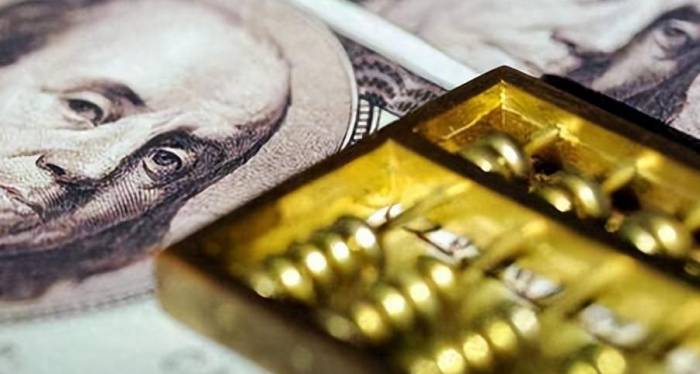USD Rises to 47.8%, Euro Falls to 22.47%
The Society for Worldwide Interbank Financial Telecommunication (SWIFT) has released the latest data for July this year, showing that the Chinese yuan has reached a new high, and the global monetary system dominated by the US dollar is undergoing changes.
In July, the US dollar accounted for 47.8% of international payments, which is an increase compared to June, and it remains the largest currency in the international payment field, almost occupying a "half of the territory".
The international payment shares of the US dollar in May and June were 47.89% and 47.08%, respectively.
There was a decline from May to June, and a clear rebound from June to July, but the magnitude was not significant, and it generally maintained around 47%.
This indicates that the US dollar still occupies a dominant position in the current international payment field.
Although market expectations reflect that the Federal Reserve may cut interest rates in September, and the US dollar index will fall, entering a cycle of interest rate cuts and depreciation, its dominant position cannot be changed in the short term.
Advertisement
The further consolidation of the US dollar's position is inseparable from the "contribution" of the euro.
The euro's international payment share in July was only 22.47%, which is less than half of the US dollar.
Once upon a time, the euro's payment share reached more than 40%, which was a strong presence that could compete with the US dollar.
But what about now?
The euro has fallen to its current situation for many reasons, including internal reasons of the EU and external impact factors.
From the EU itself, it is often just an economic union and cannot reach a consensus on important issues, with many differences, which seriously hinders the development of the EU.
Moreover, the economic development within the EU is also very unbalanced.
Now, even the "leader" Germany has a continuous negative growth in GDP, which is a drag.
From the external perspective, whether it is the US dollar raising interest rates to harvest the EU, or the Russia-Ukraine conflict causing a major inflation in Europe, it has brought an inevitable big impact on the EU and the euro.
After the US dollar and the euro, the international payment share of the British pound reached 7%, making it the third-largest currency in the world.
Although the share has decreased, the British pound is a typical example of "a dead camel is bigger than a horse".
Although the UK is no longer the once powerful empire on which the sun never sets, London's position as a global financial center is still very stable, and the British pound also plays an important role in the global payment field.
In July this year, the international payment share of the Chinese yuan reached 4.74%, which was an increase of 0.13 percentage points compared to June, setting a new high, surpassing the Japanese yen, and becoming the fourth largest payment currency in the world for nine consecutive months, following the US dollar, the euro, and the British pound.
However, is the payment share of the Chinese yuan really only 4.74%?
After all, China's GDP once reached 77% of the United States, plus China's huge annual foreign trade export volume, which seems to be inconsistent with the 4.74% share of the Chinese yuan.
More importantly, the 4.74% data is released by the SWIFT system, and there is still a part of the Chinese yuan transactions that have not passed through the SWIFT system, so this number is obviously not comprehensive.
In addition, China's own cross-border payment system for the Chinese yuan (CIPS) is developing rapidly, with 8 new participants in July, including 2 direct participants and 6 indirect participants.

By the end of July this year, China's CIPS system covered more than 4,700 banking institutions in 184 countries around the world, with 150 direct participants and more than 1,400 indirect participants.
The platform's transaction volume and scale are both growing rapidly.
Although the CIPS system is still far from the SWIFT system in terms of daily transaction volume and transaction scale, the CIPS system has a short history, but the key point is that the growth rate is very fast.
It is important to know that the process of the US dollar replacing the British pound's global currency dominance took a century of layout and catching up, which is a very long process and not something that can be achieved overnight.
Therefore, the internationalization of the Chinese yuan is a long and arduous task, and it is necessary to recognize the objective reality and continue to forge ahead.
Leave A Comment